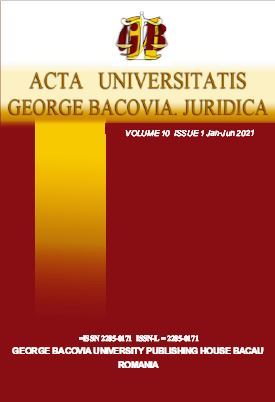Insula șerpilor din inima României: procesul optanților maghiari și alte nedreptăți ale sistemului ticăloșit, afectat de o gravă corupție generalizată
Partea a II a
The Island of Snakes in the heart of Romania: the trial of the Hungarian optants and other injustices of the vile system, affected by a serious widespread corruption
Part II
Author(s): Valentin Stelian BădescuSubject(s): Law, Constitution, Jurisprudence, Human Rights and Humanitarian Law
Published by: Editura Universităţii George Bacovia din Bacău România
Keywords: revisionism; domestic and internationalized process of Hungarian electors; public international law;
Summary/Abstract: „Transylvania is the country par excellence of the ancestors of the Romanian people, the Dacians, who had, within its borders, the center of their power and the capital of their state during the wars with the Romans. It is then an essential part of the Roman province of Dacia, which also had its capital here, as well as the headquarters of the two legions. Inhabited incessantly during the pre-feudal period by the descendants of the Daco-Romans, ie by the ancient Romanians, Transylvania is the homeland of the first Romanian voivode attested by historical sources, a voivode who opposes the armies of the Hungarian invaders. Here I mention the medieval documents for the first time "the country of the Romanians". Just as, from its contents, the great rivers that cross the Carpatho-Danubian space are born, in the same way, incessantly, over the centuries, the overflow of the Romanian population flows from it, crossing the mountains to the south, to the east and to the north. Valued by the persevering, bimillennial work of our people, Transylvania is a typical Romanian land. The Romanians are the first inhabitants that history remembers in Transylvania, local inhabitants, sons of its land, “we are from here” as the Romanian peasants from the place say; the Romanians form the vast majority of the population of Transylvania, with them living here a number of Hungarians, Szeklers, Saxons and Swabians. Through their incessant, hard work, the inhabitants of Transylvania made the earth bear fruit, bringing to light its wealth. For thousands of years we have been sowing and reaping, raising flocks of cattle, digging vines, making ponds and extracting salt, gold and fuel oil from the depths of the earth. On the basis of all these facts, it is normal, therefore, that the natural, unshakable unity of Transylvania with the entire Romanian land should have gained a repeated international consecration, first through the Peace Treaty of Trianon (1920), then that of Paris (1947)”. [Constantin C. Giurăscu, „Transylvania in the history of the Romanian people”].
Journal: Acta Universitatis George Bacovia. Juridica
- Issue Year: X/2021
- Issue No: 1
- Page Range: 5-78
- Page Count: 74
- Language: English, Romanian

